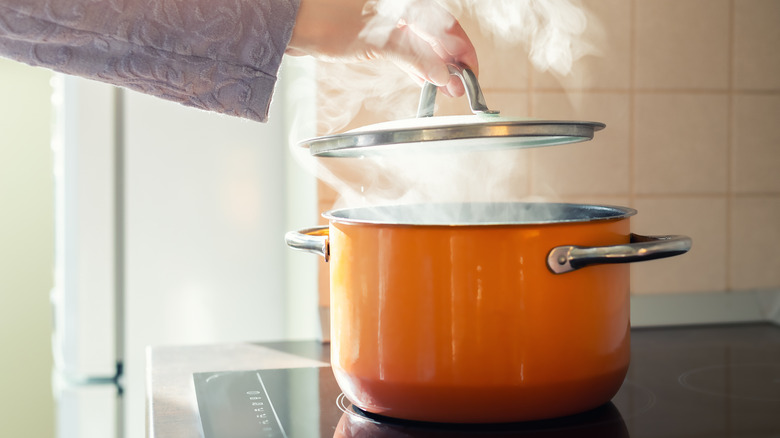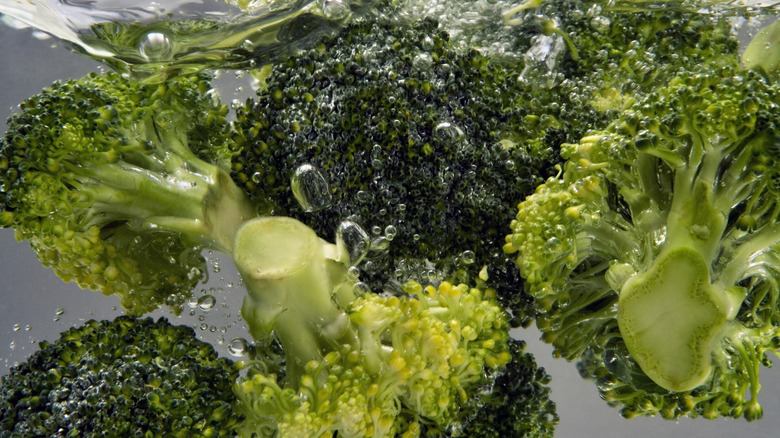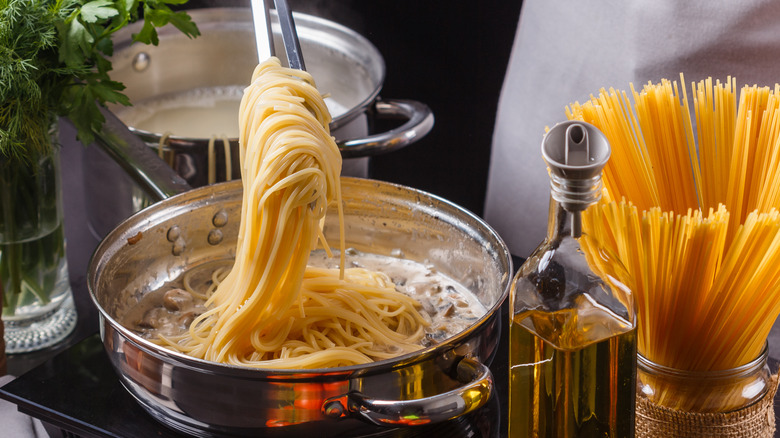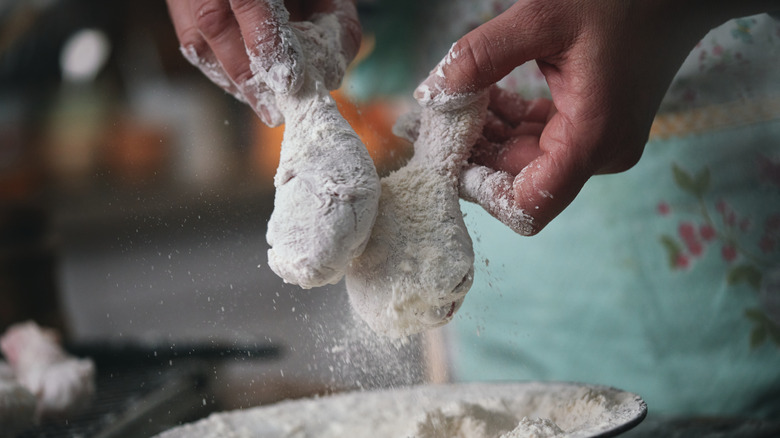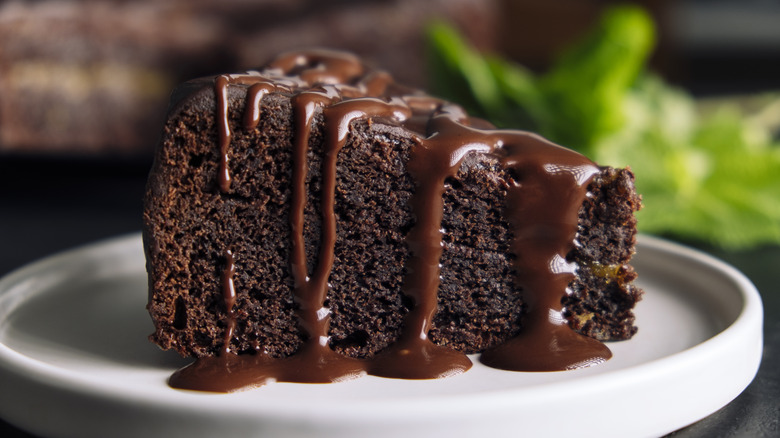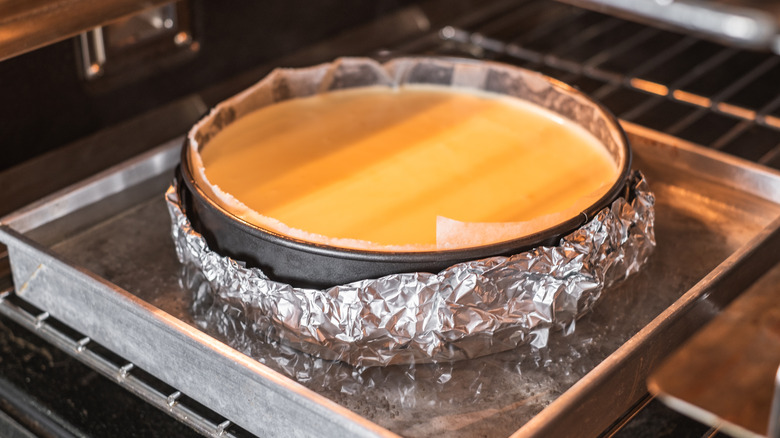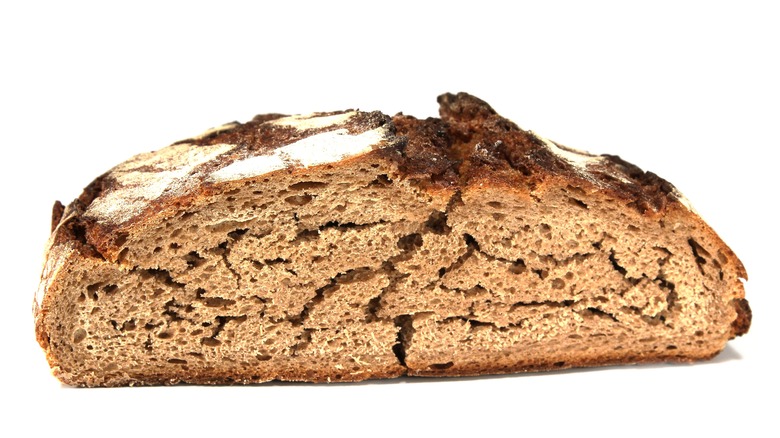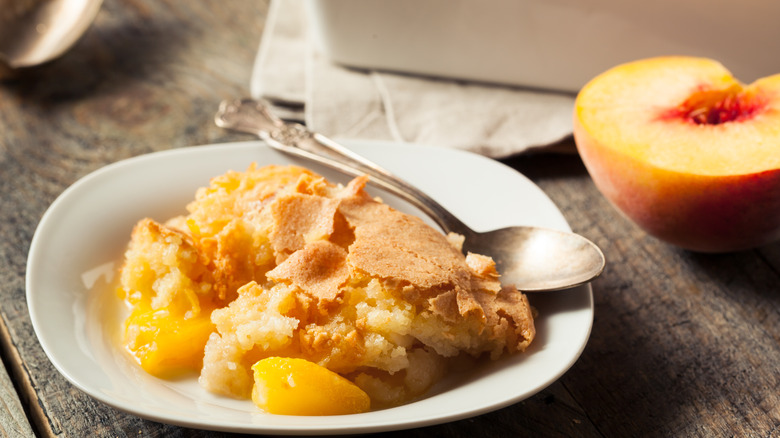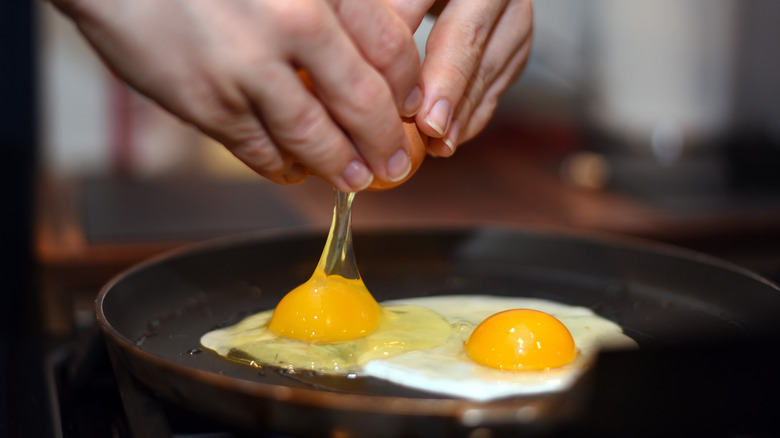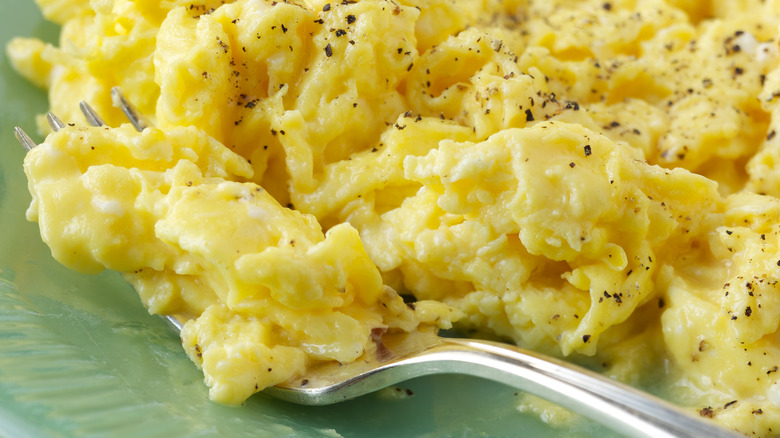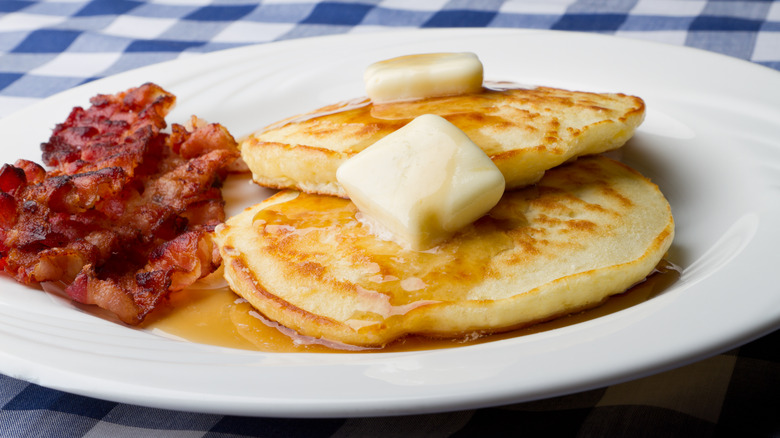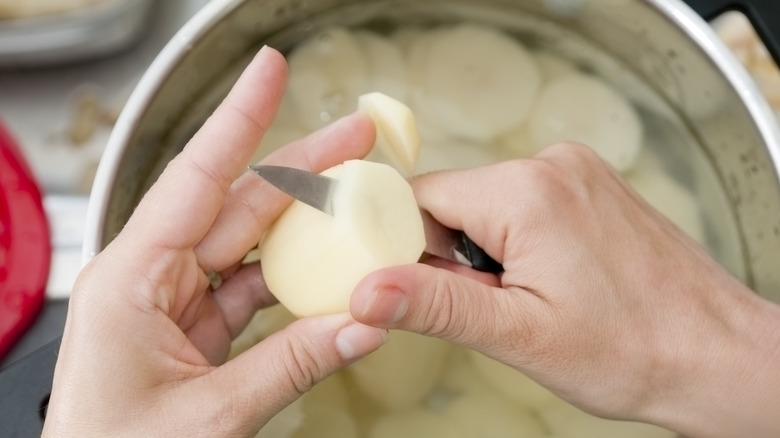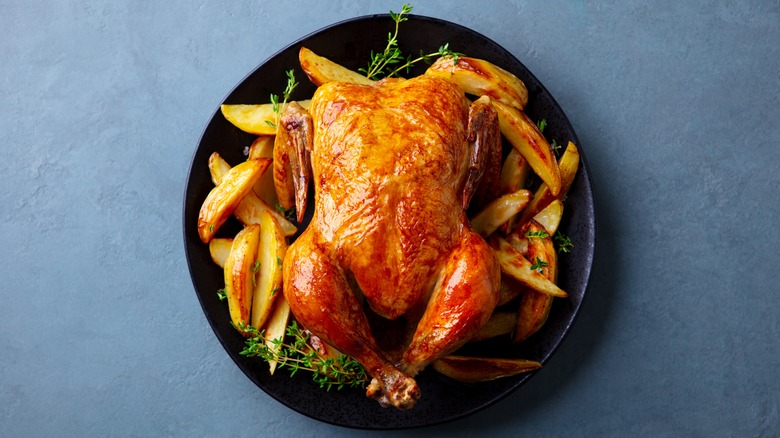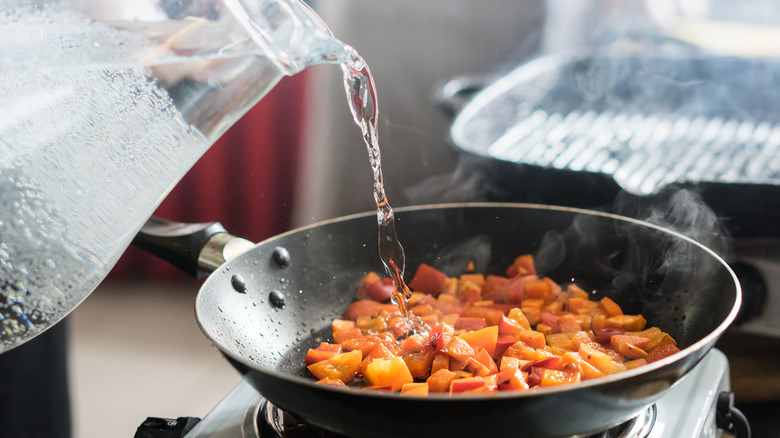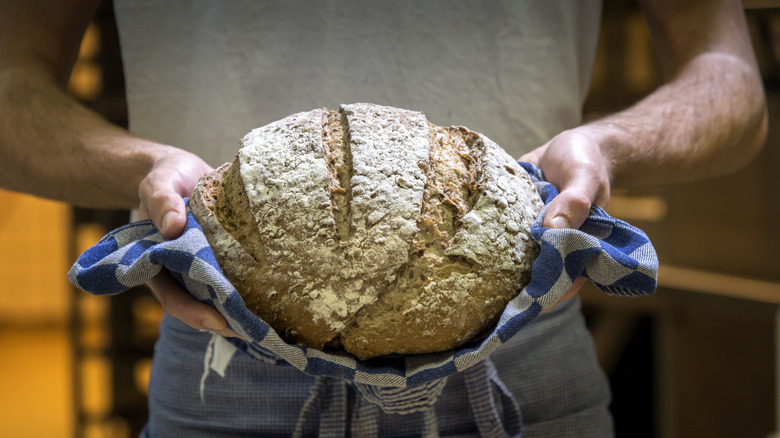Tricks For Cooking With Water You'll Wish You Knew Sooner
It seems needless to discuss the importance of water for our planet. Plants, animals, and humans all depend on it. After all, it covers around 70% of the world's surface and is a true superhero compound we literally can't live without. In the culinary world, we use water daily and mostly take it for granted. We never praise it or give it the well-deserved credit it's due. You'll rarely find articles highlighting the importance of water in our cooks and bakes or literature that focuses solely on the role water plays in the culinary world. But we're here to change this narrative and, even for this one time, put water in the spotlight.
Water helps us cook pasta, make hearty soups and stews, steam delicate veggies, and hydrate numerous delicious bakes. But these roles are familiar to everyone. What we want to focus on are the creative and ingenious ways you can use water to boost flavor, preserve food, or amp up the crispiness of fried dishes. These tricks will show you that apart from being essential for cooking, water can also be that mighty ingredient that turns mediocre dishes into spectacular ones.
Soak your veggies in water to give them extra crunch
One of the easiest and simplest tricks you can do with water is to let your sliced and prepped veggies soak in a water bath. The approach yields crisp and bright-tasting vegetables that will never reveal they have been cut well in advance. This simple technique works because slicing veggies inevitably leads to the loss of water content. Because water makes the veggies juicy and hydrated, its loss leads to dehydration, and you end up with sad, limp, and dry vegetables. By getting them into the water bath, veggies can rehydrate, retain lost water, and even soak in some more, becoming extra crispy.
This neat trick is most effective with the veggies that start with a crunchy texture you want to keep or amplify. It will work great for carrots, radishes, cucumbers, green beans, and onions. Ideally, you want to use the method for salads or other dishes that call for unprocessed, raw veggies, allowing them to show off their best crispy qualities. Leave the veggies in the water bath for a couple of hours, preferably overnight. Use cold or ice-cold water for the best results, and keep the veggie-packed bath inside the refrigerator.
Add pasta water to pasta sauces
Adding pasta water to pasta sauce is a common trick that will seriously upgrade your cooking game. This is a classic Italian technique, and if that's the way it's done in the land of pasta, it means that you should be doing it, too. The trick works because pasta water is packed full of starch. Though the water is murky and does not look appetizing, it will give your sauces a beautiful texture.
This trick works with most pan-made pasta sauces and requires no special skills. As your pasta cooks, simply take out a cup of water and set it aside. When you are ready to assemble the sauce — which usually entails oil or butter and optional additions — gradually add some pasta water until you reach the desired thickness. Make sure to mix the sauce continuously. Once the sauce is done, add your pasta and mix well. The pasta water will make the sauce thinner, but it will also set off emulsification, the wonderful process that will make the sauce extra creamy. Apart from the textural benefit, this sauce will also better cling to the pasta, and we all know that more sauce is always welcome. The only thing you should keep in mind is to prepare the pasta al dente, as it will continue to cook in the pan when you swirl it with the sauce.
Dip your chicken in water for perfectly crisp fried chicken
You probably thought water and frying oil don't mix, but the following trick will convince you otherwise. This idea suggests dunking your flour-coated chicken in water before you toss it in the flour for the second time and leave it to fry in the sizzling oil. The reasoning behind this technique is that by mixing flour and water, you create an almost glue-like coating on the surface of your chicken that will help the second flour coating to adhere better, creating a perfectly crispy crust.
This technique is best suited for flour-dredge breading, but there are no rules about the optional add-ons and the seasonings. Feel free to use your favorite recipe, even if it includes cornstarch. The double dip in the flour will give the chicken a uniform and substantial coating. However, in comparison to the classic egg and breadcrumb dredge, this flour-based and water-dunked technique yields a much thinner and more delicate crust, which is essentially crispier and easier to break through.
Add water to amp up flavor of your chocolate desserts
Typical liquid ingredients in desserts include milk, buttermilk, oil, or melted butter. Though they all contribute to the overall flavor and texture and impart desired qualities, water might be the secret ingredient that boosts the flavor in your favorite chocolate desserts.
Though it does sound unusual, you might have already heard about Depression-era desserts or the Wacky Cake that follow the same approach. This method best works with classic chocolate sponges or sheet cakes that combine chocolate or cocoa powder, eggs, flour, fat, sugar, and milk to make a thick chocolate batter. The trick here is to replace the milk with water. Adding water on top of other ingredients won't do, as this will disrupt the ratio of wet and dry ingredients and most likely ruin the cake. Water works better here as it allows chocolate to shine through, not masking it with any fatty nuances and flavors you typically get from milk.
Water also comes in handy for recipes that rely on cocoa powder. One suggestion is to mix cocoa with hot liquid so it can bloom and unlock its chocolaty potential. Though you can heat milk and mix it in, water is the most convenient option and will do the job perfectly.
Bake your dessert in a water bath
Water baths are not a novelty in the baking business. The method, also known under the French term bain marie, typically involves a larger pan filled with water that holds smaller pans or ramekins. The dessert you want to bake is nestled in the smaller pans, and the whole apparatus is sent to the oven. The bain-marie technique is designed for custardy cakes such as flans and puddings, but it also works for cheesecake or similar desserts.
This neat trick allows even baking and keeps your cakes and flans hydrated. As the water surrounds the entire pan, it helps the cake to bake evenly, preventing the edges from browning too fast while the center hasn't cooked yet, resulting in uniform color and appearance. A water bath also prevents the cakes from drying out. The hot air in the ovens tends to be too harsh for gentle custard, but as the water bath continually releases steam, the cakes stay moist and juicy, leaving no cracks on the surface.
You can easily assemble a classic water bath at home. Just make sure to use pans with taller edges. You do not want heavy cast irons here; rely on regular cake pans and ramekins. The water in the bath should always be hot, and make sure that none of it ends up in the dessert.
Give new life to your stale bread with a splash of water
The next trick uses water to revive the sad-looking loaf of stale bread that didn't get its chance to be eaten at its prime. This does not apply to bread that has already developed nasty, moldy patches — that one is well beyond repair and should go straight to the trash can.
This water trick best works with whole loaves or bigger pieces that haven't been sliced. You'll have to stick the loaf under running water, ensuring all sides get a generous splash over the crust. If you have just a piece or half of the loaf, make sure that not a lot of water gets inside the bread, but again, use plenty for the crust. Next, stick your bread in an oven set to approximately 300 degrees Fahrenheit. If you want it faster, you can even go up to 450 degrees Fahrenheit. The trick works because the water rehydrates the interior, but most of it turns into steam, leaving the bread soft and moist but not soggy. The heat will also warm the crust and leave it crispy. Keep the bread in the oven for about 10 minutes, but it is best to keep an eye on it as the time will depend on the size of your loaf.
Cover your cobbler with water for the perfectly shiny crust
Adding water to your perfectly assembled cobbler might seem counterintuitive, but this water trick will ensure that your crust is shiny and perfectly crisp, attaining that amazing texture that makes a distinctive crackling sound when you dig into it.
A classic cobbler typically consists of a fruity base usually made with stone fruit, berries, or apples, but any sturdy fruit that softens during baking is a good option. The fruit is generally topped with dough or a thick batter that creates a beautiful topping, almost like a biscuity patchwork that allows the fruit to break through, creating colorful, juicy puddles. Traditionally, cobbler is assembled and baked as is, but you might want to try the water trick that suggests dusting the top with sugar and then dousing it with a half cup of hot water right before you put the cobbler in the oven. This trick works best with batter-like crusts and usually incorporates a light sprinkle of sugar on top before adding the water. The final result is the crispiest and crunchiest cobbler topping you'll ever try.
Add some water to make the best fried eggs
If the idea of adding water to a frying pan packed with eggs and oil sends shivers down your spine, we perfectly understand you. Though we've all been taught that water and sizzling oil should never come in contact as the oil tends to splatter and explode, in some cases, the two can work together and, as it seems, produce perfectly crispy fried eggs.
The trick is to heat the oil and add your eggs, followed by a spoonful or less of water at the pan's edge. You should then cover the pan and leave the eggs to baste until they reach the desired doneness. Adding water will create steam that will stay trapped inside the pan. It will slowly cook the top of your egg, resulting in a tender egg yolk encased in a completely cooked egg white. Simultaneously, the oil and the heat from the pan will create a golden, crispy bottom. Because only a small amount of water is added, there should not be any serious splattering reactions.
A splash of water can also work wonders for scrambled eggs
Some of the most famous international chefs consider scrambled eggs one of the fundamental dishes that every person should be able to execute perfectly. If you still haven't found your favorite recipe, you might want to try the secret egg hack that will give your eggs that oomph that you can't seem to get right with other methods.
All you have to do is add a splash of water to your lightly whipped eggs. The water will help with creaminess and create a feather-light texture you aim to achieve with scrambled eggs. The best part of this method is that it represents the ultimate no-frills approach that does not call for any pantry or refrigerator staples. When you're ready to cook your eggs, make sure that you always cook them low and slow. You want to avoid high heat as they will cook too fast, leaving you with overly dry eggs that will miss all those desired qualities.
Swap milk for water or add seltzer to your pancakes
If you're a fan of homemade pancakes, the next trick might be a lifesaver the next time you run out of milk. Traditionally, we add milk to our pancakes, but many don't realize that equally delicious pancakes can be whipped up with only water.
Essentially, you will just swap milk with water in your favorite recipe. This ingenious trick will not affect the consistency, though it might remove some of that rich milky flavor. But you can make up for that with the addition of butter that will take care of the richness. An even better trick suggests using cold seltzer instead of tap water. If you think about it, the effervescence is the solution to achieving an airy quality to your pancakes. The bubbles will become larger as they are heated, creating a fluffy, almost cloud-like texture for your pancakes.
Drown sliced potatoes in an ice bath to get perfectly crunchy fries
Stacking veggies in water is a well-known technique that can seriously ease the prep work and keep the veggies tasting and looking fresh, but there is another benefit that is mainly associated with starchy potatoes.
The trick is to take your cleaned and sliced potatoes and throw them into an ice bath. As potatoes are loaded with starch, the cold water will help remove some of it. Though potato starch can be amazing in some recipes, too much can cause your fried and roasted potatoes to develop too much chew. Alternatively, without it, you'll get a much crispier shell. Also, if you want to prep the potatoes and use them later, the water bath will keep them from browning. You can give your potatoes a shorter water bath, but the technique also works for longer or overnight soaks. This water trick works with fries and roasted potatoes; just make sure you drain and dry them after taking them out of the water. Later on, you can roast or fry them and serve them as a side dish, a great breakfast item, or a nutritious dinner, ideally paired with a dipping sauce of choice.
Pouring water over poultry will give you a deliciously crispy skin
If you like your poultry with the skin on and want that skin to be perfectly crispy and attain that beautiful deep golden color, you should douse your bird with hot water.
Though it might sound unconventional, this water trick is not a novelty as it stems from traditional Asian cuisine, and it's the reason why those beautiful Peking ducks have the most amazing, almost lacquered skin. For this trick to work, you need to use boiling water, but you can use it with smaller pieces of meat or the whole bird; just make sure the skin is left on. You'll have to clean and prep your meat and then carefully pour boiling water over it. You'll notice that the skin will lightly shrink, tighten, and become almost translucent. Then, pat the pieces with a dry towel, and you're ready to fry or roast.
This trick works because all that boiling water renders the fat between the skin and the meat. The skin then browns and attains crispiness much faster, resulting in the ultimate version of crispy fried chicken skin.
Deglaze the pans with water
Deglazing is a familiar term in the culinary world. Essentially, the technique calls for adding liquid to a pan used to cook food. The pan should be left on high heat, and the goal is to introduce liquid so it releases all the caramelized bits left at the bottom of the pan. All those browned specks will greatly contribute to the final flavor of your dish and can make lip-smacking sauces.
The recipes will usually suggest using wine or broth to deglaze pans, and though the two do the job perfectly and add tons of additional flavor, it's also worth pointing out that you can use water for the same purpose. Water will not contribute to the overall flavor of the dish, but it is great for scooping up everything from the bottom of the pan. Most of the water will evaporate, so don't fear it will make your sauces watery. You just want to make sure that the pan is hot and the water is warm. Using water for deglazing is a great option when you want to avoid using alcohol or don't have stock on hand.
Use water to create steam in the oven that will help your bread rise
The purpose behind creating steam in the oven is to add moisture to your bakes and prevent them from drying out. This technique is usually done when baking bread, as the steam helps it get that initial rise. It also references the bain-marie technique used for baking custardy cakes, such as cheesecake, where you do not want too much moisture to evaporate, leaving your cake dry and cracked.
Of course, water is the trusty aid that will help you introduce steam into the oven, and there are multiple ways to do it. The straightforward method is to pour some boiling water into a pan or a skillet that you'll place at the bottom of the oven. Due to the heat from the oven, the water will continue to evaporate, slowly hydrating your bakes that are cooking on a rack above the water. You can also introduce steam by adding ice into the lower skillet. It will quickly evaporate and release steam. Another option is to use the classic spray technique, and give your loaf a good spritz of water all over before it goes into the oven. You'll also want to open the oven mid-bake and spray more water onto your bread for the best results.
